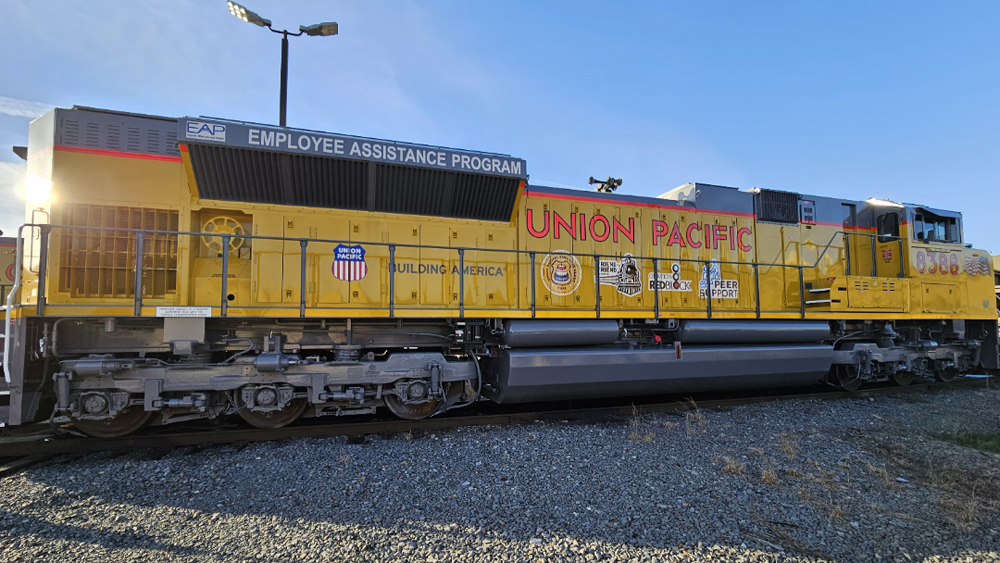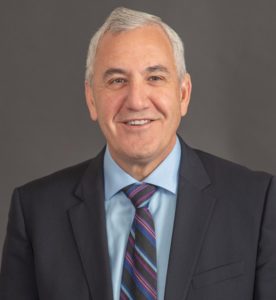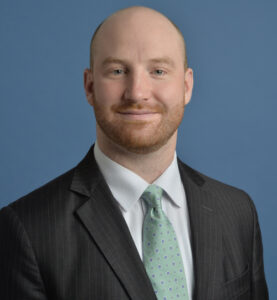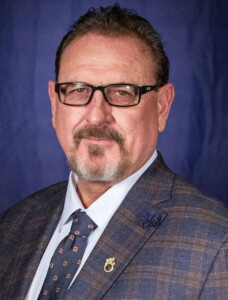
OMAHA, Neb. — Incoming Union Pacific CEO Jim Vena will not get a honeymoon with rail labor when he begins leading the railroad on Aug. 14.
Local SMART-TD leaders and the Transportation Trades Department of the AFL-CIO were critical of the company’s selection of Vena, who served as UP’s chief operating officer in 2019 and 2020.

Vena accelerated UP’s shift to a low-cost Precision Scheduled Railroading operating model. During Vena’s tenure, overall employment at UP fell 21%, according to Surface Transportation Board data, including a 43% reduction in the number of shop workers, a 19% drop in maintenance of way employment, and a 14% decline in train and engine crews.
Five SMART-TD general chairmen, in a July 26 letter to UP’s vice president of labor relations, said Vena’s return was a “giant step backwards.”
“As COO, Vena enacted policies, practices, and procedures that deliberately destroyed our members’ quality of life for the sake of profit and make him personally responsible for the hardships our membership and other employees have endured in the last few years,” General Chairmen Roy Davis, Luke Edington, Gary Crest, Scott Chelette, and Joe Cornelius Jr. wrote. “He orchestrated huge furloughs and cuts to every department in transportation, which resulted in the crew shortages we have yet to recover from. Vena put this railroad on a long-term path of destruction for a short-term return on investment for Wall Street tycoons. Watching Union Pacific place this albatross as CEO for the foreseeable future is heartbreaking for those of us who have worked hard to bring Union Pacific back from the brink.”
Union Pacific, like BNSF Railway, CSX Transportation, and Norfolk Southern, experienced widespread crew shortages in 2022 that led to service problems that prompted complaints from shippers and scrutiny from regulators.
UP credits Vena with leading an operations team that reaped more than $1 billion in efficiency savings and delivered the best service in the railroad’s history.
But the Transportation Trades Department of the AFL-CIO echoed the concerns that the SMART-TD general chairmen raised.

“We are deeply disappointed in Union Pacific’s decision to appoint former Chief Operating Officer Jim Vena as CEO given his history with Precision Scheduled Railroading and the pain he inflicted on the rail workforce,” TTD President Greg Regan said in a statement. “Buckling to Wall Street pressure, Union Pacific’s decision to hire Mr. Vena demonstrates that it is doubling down on a failed business model and gambling with the company’s future. The freight rail industry’s success depends on fresh leadership that can guide carriers away from the PSR past and towards a future that prioritizes safety, service, and staffing.”
Union Pacific defended its transition to a PSR operating model and said it wants to reach additional labor agreements that would improve quality of life for its workers.
“Class I railroads are in a different era with new stakeholder expectations. Transportation and markets demand new approaches and strategies to meet customer requirements. Union Pacific is proud of the sick leave agreements that we reached with 12 of 13 unions and remains committed to continuing work to address quality-of-life issues,” spokeswoman Robynn Tysver says.
“Incoming Union Pacific Chief Executive Officer Jim Vena, who started his railroading career as a brakeman, understands firsthand the challenges of our craft professionals and will be meeting with Union Pacific employees and other key stakeholders soon after assuming his new position Aug. 14,” she adds.
Vena, in a statement issued last week as part of UP’s announcement, said his focus will be “to ensure the company delivers industry-leading customer and operating excellence, cultivates and empowers our employees, and cares for the communities in which we operate.”
The SMART-TD general chairmen who wrote to UP said they would not participate in meetings with management next month and is taking a wait and see attitude on meetings scheduled for September and November.
The general chairmen also said they were skeptical about ongoing negotiations, including talks on Auxiliary Work and Training Status crew boards, which are an alternative to furloughs. Under AWTS, employees who would otherwise be furloughed go onto a separate auxiliary board where they’re guaranteed full benefits plus a minimum of eight days pay per month.
When traffic picks back up, employees are called back to full-time status. The program, negotiated on a territory-by-territory basis, once covered nearly 80% of UP’s train crews and improved retention during downturns. But UP cut the auxiliary boards as a cost-saving move during its shift to PSR.
“Union Pacific currently has AWTS boards in place for approximately 50% of our workforce,” Tysver says. “We are in discussions with labor and evaluating where it makes sense to deploy this or other mechanisms to help maintain our workforce.”
The Brotherhood of Locomotive Engineers and Trainmen took a more diplomatic stance than TTD and the SMART-TD general chairmen.

“I worked as a locomotive engineer at Union Pacific in the years when Jim Vena was serving as chief operating officer. Today, as the president of the Brotherhood of Locomotive Engineers and Trainmen, I look forward to working with him in his new role as CEO,” BLET President Edward Hall said in a statement.
“In 2023, UP reached agreements with BLET to improve both scheduling and sick leave. We would like to see continued progress, including necessary changes to the Precision Scheduled Railroading operating model. Few people alive know more about PSR than Vena. He should be fully aware of its failings. If not, rest assured, we will make him aware.”
UP announced Vena’s selection on July 26, five months after one of UP’s largest investors publicly demanded that the board oust CEO Lance Fritz and hire Vena as his replacement. Soroban Capital Partners was critical of UP’s performance under Fritz and noted that the railroad’s operations and service quickly improved during Vena’s two-year tenure as chief operating officer, only to falter after his departure.
Vena spent four decades at Canadian National, rising from a brakeman to chief operating officer. CN posted a record low operating ratio and its best safety performance while Vena was chief operating officer from 2013-2016.














Managers on UP are beholden to generating data in pie charts, bar charts, and other graphical illustrations appealing to the statistical eye. Those people possess minimal human relations skills and would be far better suited as employees of the Wagner Group given their brusque pompous attitudes towards those they ostensibly manage and theoretically supervise.
“The service demands the faithful, intelligent, and courteous discharge of duty” is a primary rule governing employees of all ranks and of UP operating management at all levels the words “faithful,” “intelligent,” and “courteous” are intellectual obstacles to their interactions with the employees the supervise in that they know only the theoretical constructs of each craft and not the nuances and dirty hands realities of what is required to make the railroad run at 245AM on a rainy Sunday morning.
Oddly – or maybe not – the number of recent work(er) improvement agreements between UP and its Unions were reached without Mr. Vena.
I guess the honeymoon is over.
Also, UP may become very hard line on the Sunset hearins. Other Amtrak on UP now and future especially MEI . SHE DFW will be on UP.
With Vena’s appointment I am surprised there is any space left for comments. Rank and file employees I have talked to are not pleased to put it mildly. He cut employment so much that work on the right of way is slow as it can be. Materials will be laid on the ground and not touched for months and months indicating not enough people to do the work. It is catch as catch can. To me, that backs up the statements that Vena cut to many people and did not hire back enough to keep work current. They still don’t have enough train crews even after many months of trying to hire them. With his layoff reputation it may even become more of a problem. All comments are my opinion.
Well, if Vena is such a disciple of PSR, then he will be the first to say, as CN has said, that scheduled trains is the only way to meet all the goals of PSR style management systems and that the necessary amount of crews to running scheduled trains needs to be increased while train length is decreased to more modest lengths, in that no train shall be longer than any siding it might be required to take, somewhere between 7500 ft and 10,000 feet max.
If Vena is just going to keep managing as Fritz has done and make deep cuts as a way of increasing operating ratio, then nothing will have changed and all the talking points by Robynn Tysver are just more corporate BS and a sign that Wall Street is still a bigger customer than the shippers and customers that depend on the railroad for ON TIME SERVICE, FAIR RATES AND MEASURABLE RESULTS TO THE SAME.
I encourage the STB to keep the pressure on UP before it becomes the next Penn Central, going from the greatest railroad to the worst railroad because it refused to do what was necessary to stay in the business.
Oh yeah, UP credits Vena with “leading an operations team that reaped more than $1 billion in efficiency savings and delivered the best service in the railroad’s history…” And how did he do that? By dropping the lay-off guillotine on thousands of employees heads for the sake of profits. The union leaders are right. This is a bad omen for the future of Union Pacific
Headquartered in Omaha-Nebraska, Union Pacific Corporation hopes that the veteran railroad executive as a new top boss will be able to fix the company’s operational problems. The monumental railroad operator’s performance has come under investor criticism, notably for its operating ratio, which has increased over the last five quarters. The ratio indicates operating expenses as a percentage of revenue. Analysts expect the incoming CEO to reverse that trend.
Dr. Güntürk Üstün